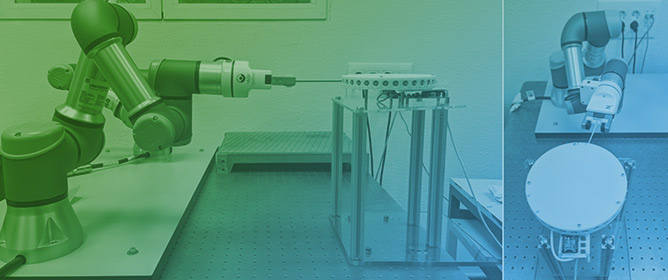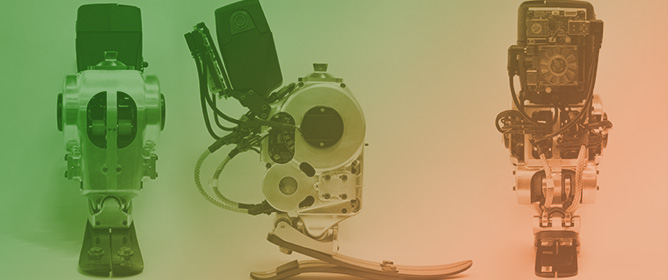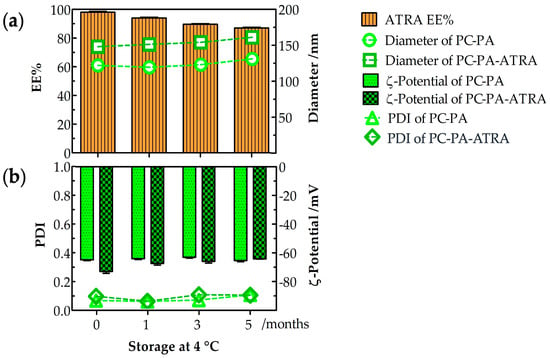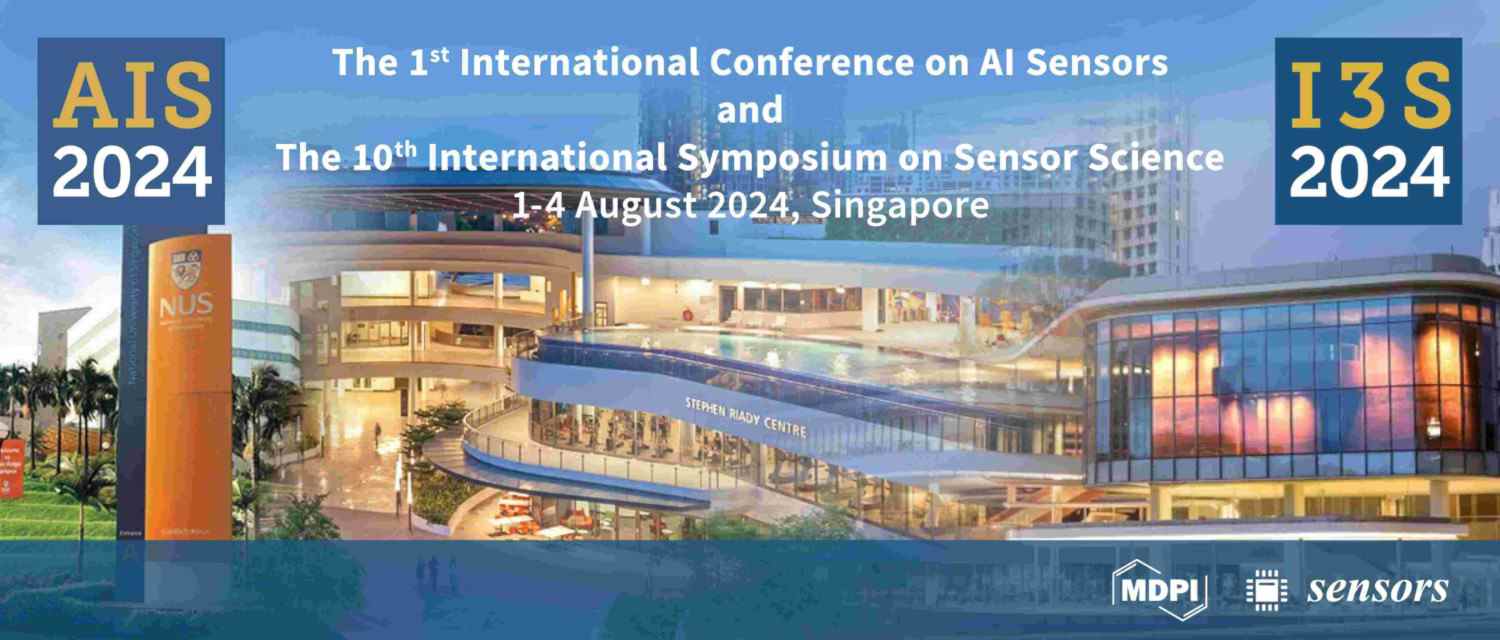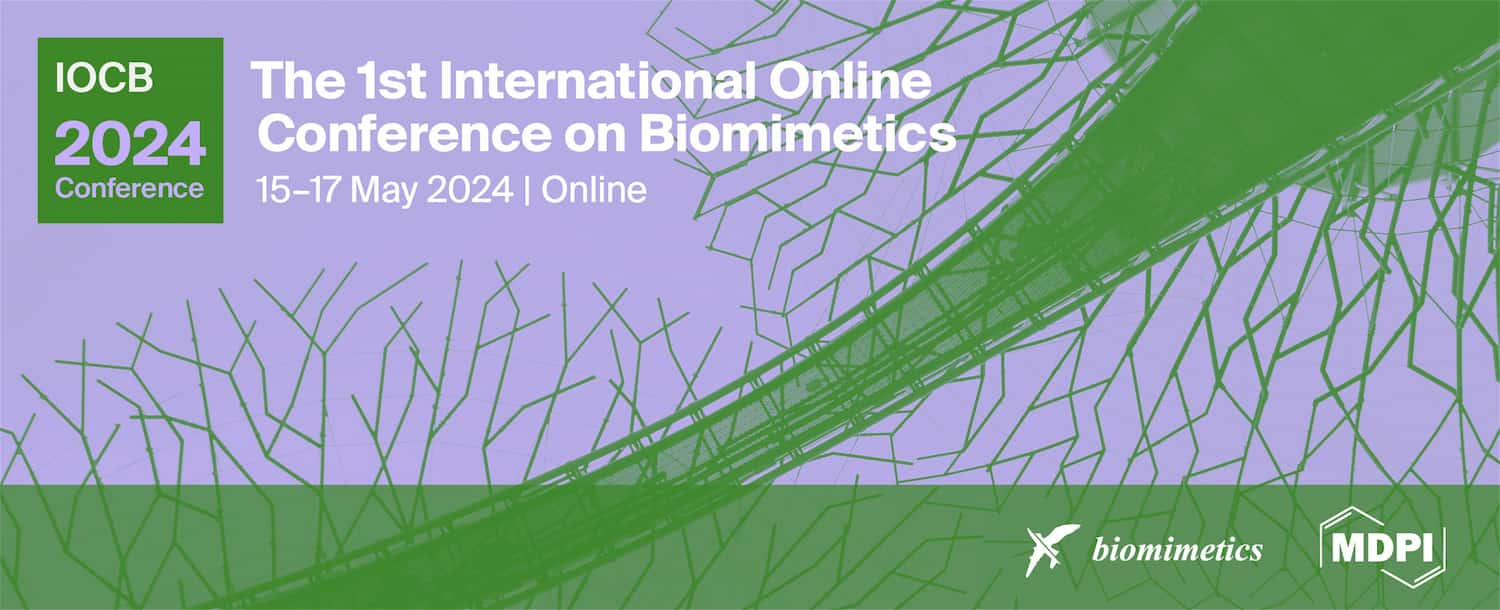Journal Description
Biomimetics
Biomimetics
is an international, peer-reviewed, open access journal on biomimicry and bionics, published monthly online by MDPI. The International Society of Bionic Engineering (ISBE) is affiliated with Biomimetics.
- Open Access— free for readers, with article processing charges (APC) paid by authors or their institutions.
- High Visibility: indexed within Scopus, SCIE (Web of Science), PubMed, PMC, CAPlus / SciFinder, and other databases.
- Journal Rank: JCR - Q1 (Engineering, Multidisciplinary) / CiteScore - Q2 (Biomedical Engineering)
- Rapid Publication: manuscripts are peer-reviewed and a first decision is provided to authors approximately 17.2 days after submission; acceptance to publication is undertaken in 3.6 days (median values for papers published in this journal in the second half of 2023).
- Recognition of Reviewers: reviewers who provide timely, thorough peer-review reports receive vouchers entitling them to a discount on the APC of their next publication in any MDPI journal, in appreciation of the work done.
Impact Factor:
4.5 (2022);
5-Year Impact Factor:
4.1 (2022)
Latest Articles
Effects of Anionic Liposome Delivery of All–Trans–Retinoic Acid on Neuroblastoma Cell Differentiation
Biomimetics 2024, 9(5), 257; https://doi.org/10.3390/biomimetics9050257 (registering DOI) - 24 Apr 2024
Abstract
►
Show Figures
All–trans–retinoic acid (ATRA) has long been known to affect cell growth and differentiation. To improve ATRA’s therapeutic efficacy and pharmacodynamics, several delivery systems have been used. In this study, free ATRA and anionic–liposome–encapsulated ATRA were compared for their effects on SK–N–SH
[...] Read more.
All–trans–retinoic acid (ATRA) has long been known to affect cell growth and differentiation. To improve ATRA’s therapeutic efficacy and pharmacodynamics, several delivery systems have been used. In this study, free ATRA and anionic–liposome–encapsulated ATRA were compared for their effects on SK–N–SH human neuroblastoma cell growth and differentiation. Anionic liposomes made of L–
Open AccessArticle
Special Prey, Special Glue: NMR Spectroscopy on Aggregate Glue Components of Moth-Specialist Spiders, Cyrtarachninae
by
Max W. VanDyck, John H. Long, Jr., Richard H. Baker, Cheryl Y. Hayashi and Candido Diaz, Jr.
Biomimetics 2024, 9(5), 256; https://doi.org/10.3390/biomimetics9050256 - 23 Apr 2024
Abstract
Orb-weaver spiders produce upwards of seven different types of silk, each with unique material properties. We focus on the adhesive within orb-weaving spider webs, aggregate glue silk. These droplets are composed of three main components: water, glycoproteins, and a wide range of low
[...] Read more.
Orb-weaver spiders produce upwards of seven different types of silk, each with unique material properties. We focus on the adhesive within orb-weaving spider webs, aggregate glue silk. These droplets are composed of three main components: water, glycoproteins, and a wide range of low molecular mass compounds (LMMCs). These LMMCs are known to play a crucial role in maintaining the material properties of the glycoproteins, aid in water absorption from the environment, and increase surface adhesion. Orb-weavers within the Cyrtarachninae subfamily are moth specialists and have evolved glue droplets with novel material properties. This study investigated the biochemical composition and diversity of the LMMCs present in the aggregate glue of eight moth-specialist species and compared them with five generalist orb-weavers using nuclear magnetic resonance (NMR) spectroscopy. We hypothesized that the novel drying ability of moth-specialist glue was accompanied by novel LMMCs and lower overall percentages by silk weight of LMMCs. We measured no difference in LMMC weight by the type of prey specialization, but observed novel compositions in the glue of all eight moth-catching species. Further, we quantified the presence of a previously reported but unidentified compound that appears in the glue of all moth specialists. These silks can provide insight into the functions of bioadhesives and inform our own synthetic adhesives.
Full article
(This article belongs to the Special Issue Silk-Based Bioinspired Materials: Design and Applications)
►▼
Show Figures
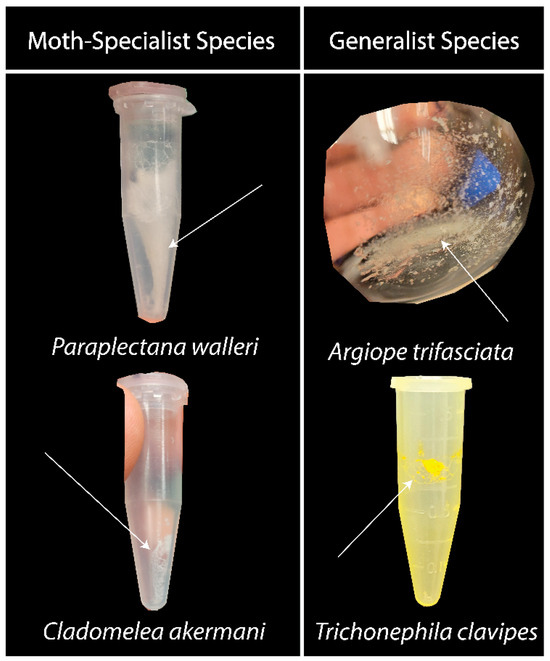
Figure 1
Open AccessArticle
Shape Memory Alloys Patches to Mimic Rolling, Sliding, and Spinning Movements of the Knee
by
Suyeon Seo, Minchae Kang and Min-Woo Han
Biomimetics 2024, 9(5), 255; https://doi.org/10.3390/biomimetics9050255 - 23 Apr 2024
Abstract
Every year, almost 4 million patients received medical care for knee osteoarthritis. Osteoarthritis involves progressive deterioration or degenerative changes in the cartilage, leading to inflammation and pain as the bones and ligaments are affected. To enhance treatment and surgical outcomes, various studies analyzing
[...] Read more.
Every year, almost 4 million patients received medical care for knee osteoarthritis. Osteoarthritis involves progressive deterioration or degenerative changes in the cartilage, leading to inflammation and pain as the bones and ligaments are affected. To enhance treatment and surgical outcomes, various studies analyzing the biomechanics of the human skeletal system by fabricating simulated bones, particularly those reflecting the characteristics of patients with knee osteoarthritis, are underway. In this study, we fabricated replicated bones that mirror the bone characteristics of patients with knee osteoarthritis and developed a skeletal model that mimics the actual movement of the knee. To create patient-specific replicated bones, models were extracted from computerized tomography (CT) scans of knee osteoarthritis patients. Utilizing 3D printing technology, we replicated the femur and tibia, which bear the weight of the body and support movement, and manufactured cartilage capable of absorbing and dispersing the impact of knee joint loads using flexible polymers. Furthermore, to implement knee movement in the skeletal model, we developed artificial muscles based on shape memory alloys (SMAs) and used them to mimic the rolling, sliding, and spinning motions of knee flexion. The knee movement was investigated by changing the SMA spring’s position, the number of coils, and the applied voltage. Additionally, we developed a knee-joint-mimicking system to analyze the movement of the femur. The proposed artificial-skeletal-model-based knee-joint-mimicking system appears to be applicable for analyzing skeletal models of knee patients and developing surgical simulation equipment for artificial joint replacement surgery.
Full article
(This article belongs to the Special Issue Bioinspired Structures for Soft Actuators)
►▼
Show Figures

Figure 1
Open AccessArticle
Review of Vision-Based Environmental Perception for Lower-Limb Exoskeleton Robots
by
Chen Wang, Zhongcai Pei, Yanan Fan, Shuang Qiu and Zhiyong Tang
Biomimetics 2024, 9(4), 254; https://doi.org/10.3390/biomimetics9040254 - 22 Apr 2024
Abstract
The exoskeleton robot is a wearable electromechanical device inspired by animal exoskeletons. It combines technologies such as sensing, control, information, and mobile computing, enhancing human physical abilities and assisting in rehabilitation training. In recent years, with the development of visual sensors and deep
[...] Read more.
The exoskeleton robot is a wearable electromechanical device inspired by animal exoskeletons. It combines technologies such as sensing, control, information, and mobile computing, enhancing human physical abilities and assisting in rehabilitation training. In recent years, with the development of visual sensors and deep learning, the environmental perception of exoskeletons has drawn widespread attention in the industry. Environmental perception can provide exoskeletons with a certain level of autonomous perception and decision-making ability, enhance their stability and safety in complex environments, and improve the human–machine–environment interaction loop. This paper provides a review of environmental perception and its related technologies of lower-limb exoskeleton robots. First, we briefly introduce the visual sensors and control system. Second, we analyze and summarize the key technologies of environmental perception, including related datasets, detection of critical terrains, and environment-oriented adaptive gait planning. Finally, we analyze the current factors limiting the development of exoskeleton environmental perception and propose future directions.
Full article
(This article belongs to the Special Issue Advances in Artificial Intelligence for Biomedical Signal and Image Processing: From Theory to Practice)
►▼
Show Figures
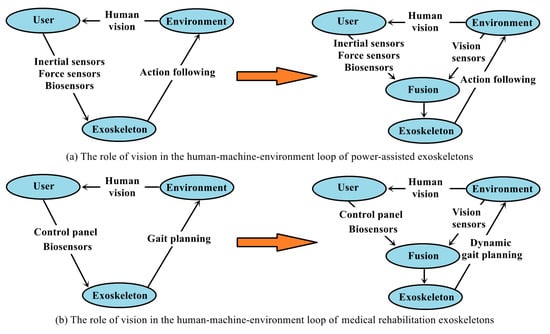
Figure 1
Open AccessArticle
Biomineralization of Polyelectrolyte-Functionalized Electrospun Fibers: Optimization and In Vitro Validation for Bone Applications
by
Ahmed Salama, Emad Tolba, Ahmed K. Saleh, Iriczalli Cruz-Maya, Marco A. Alvarez-Perez and Vincenzo Guarino
Biomimetics 2024, 9(4), 253; https://doi.org/10.3390/biomimetics9040253 - 22 Apr 2024
Abstract
In recent years, polyelectrolytes have been successfully used as an alternative to non-collagenous proteins to promote interfibrillar biomineralization, to reproduce the spatial intercalation of mineral phases among collagen fibrils, and to design bioinspired scaffolds for hard tissue regeneration. Herein, hybrid nanofibers were fabricated
[...] Read more.
In recent years, polyelectrolytes have been successfully used as an alternative to non-collagenous proteins to promote interfibrillar biomineralization, to reproduce the spatial intercalation of mineral phases among collagen fibrils, and to design bioinspired scaffolds for hard tissue regeneration. Herein, hybrid nanofibers were fabricated via electrospinning, by using a mixture of Poly ɛ-caprolactone (PCL) and cationic cellulose derivatives, i.e., cellulose-bearing imidazolium tosylate (CIMD). The obtained fibers were self-assembled with Sodium Alginate (SA) by polyelectrolyte interactions with CIMD onto the fiber surface and, then, treated with simulated body fluid (SBF) to promote the precipitation of calcium phosphate (CaP) deposits. FTIR analysis confirmed the presence of SA and CaP, while SEM equipped with EDX analysis mapped the calcium phosphate constituent elements, estimating an average Ca/P ratio of about 1.33—falling in the range of biological apatites. Moreover, in vitro studies have confirmed the good response of mesenchymal cells (hMSCs) on biomineralized samples, since day 3, with a significant improvement in the presence of SA, due to the interaction of SA with CaP deposits. More interestingly, after a decay of metabolic activity on day 7, a relevant increase in cell proliferation can be recognized, in agreement with the beginning of the differentiation phase, confirmed by ALP results. Antibacterial tests performed by using different bacteria populations confirmed that nanofibers with an SA-CIMD complex show an optimal inhibitory response against S. mutans, S. aureus, and E. coli, with no significant decay due to the effect of CaP, in comparison with non-biomineralized controls. All these data suggest a promising use of these biomineralized fibers as bioinspired membranes with efficient antimicrobial and osteoconductive cues suitable to support bone healing/regeneration.
Full article
(This article belongs to the Special Issue Biomimetic Approaches in Healthcare—Innovations Inspired by Nature)
►▼
Show Figures
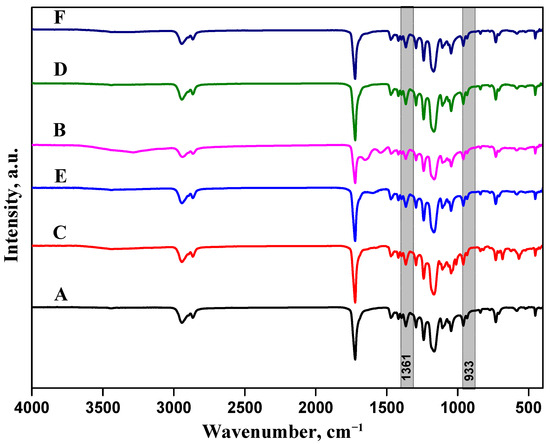
Figure 1
Open AccessArticle
Strontium and Copper Co-Doped Multifunctional Calcium Phosphates: Biomimetic and Antibacterial Materials for Bone Implants
by
Vladimir N. Lebedev, Mariya I. Kharovskaya, Bogdan I. Lazoryak, Anastasiya O. Solovieva, Inna V. Fadeeva, Abdulkarim A. Amirov, Maksim A. Koliushenkov, Farid F. Orudzhev, Oksana V. Baryshnikova, Viktoriya G. Yankova, Julietta V. Rau and Dina V. Deyneko
Biomimetics 2024, 9(4), 252; https://doi.org/10.3390/biomimetics9040252 - 20 Apr 2024
Abstract
β-tricalcium phosphate (β-TCP) is a promising material in regenerative traumatology for the creation of bone implants. Previously, it was established that doping the structure with certain cations can reduce the growth of bacterial activity. Recently, much attention has been paid to co-doped β-TCP,
[...] Read more.
β-tricalcium phosphate (β-TCP) is a promising material in regenerative traumatology for the creation of bone implants. Previously, it was established that doping the structure with certain cations can reduce the growth of bacterial activity. Recently, much attention has been paid to co-doped β-TCP, that is explained by their ability, on the one hand, to reduce cytotoxicity for cells of the human organism, on the other hand, to achieve a successful antibacterial effect. Sr, Cu-co-doped solid solutions of the composition Ca9.5–xSrxCu(PO4)7 was obtained by the method of solid-phase reactions. The Rietveld method of structural refinement revealed the presence of Sr2+ ions in four crystal sites: M1, M2, M3, and M4. The M5 site is completely occupied by Cu2+. Isomorphic substitution of Ca2+ → (Sr2+and Cu2+) expands the concentration limits of the existence of the solid solution with the β-TCP structure. No additional phases were formed up to x = 4.5 in Ca9.5–xSrxCu(PO4)7. Biocompatibility tests were performed on cell lines of human bone marrow mesenchymal stromal cells (hMSC), human fibroblasts (MRC-5) and osteoblasts (U-2OS). It was demonstrated that cytotoxicity exhibited a concentration dependence, along with an increase in osteogenesis and cell proliferation. Ca9.5–xSrxCu(PO4)7 powders showed significant inhibitory activity against pathogenic strains Escherichia coli and Staphylococcus aureus. Piezoelectric properties of Ca9.5–xSrxCu(PO4)7 were investigated. Possible ways to achieve high piezoelectric response are discussed. The combination of bioactive properties of Ca9.5–xSrxCu(PO4)7 renders them multifunctional materials suitable for bone substitutes.
Full article
(This article belongs to the Special Issue Advances in Bioceramics for Bone Regeneration)
►▼
Show Figures
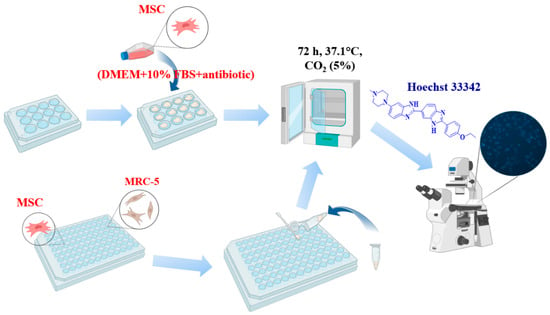
Figure 1
Open AccessArticle
Effects of Sodium Alginate and Calcium Chloride on Fungal Growth and Viability in Biomass-Fungi Composite Materials Used for 3D Printing
by
Al Mazedur Rahman, Caleb Oliver Bedsole, Yeasir Mohammad Akib, Jillian Hamilton, Taieba Tuba Rahman, Brian D. Shaw and Zhijian Pei
Biomimetics 2024, 9(4), 251; https://doi.org/10.3390/biomimetics9040251 - 20 Apr 2024
Abstract
►▼
Show Figures
To combat climate change, one approach is to manufacture products from biomass-fungi composite materials instead of petroleum-based plastics. These products can be used in packaging, furniture, and construction industries. A 3D printing-based manufacturing method was developed for these biomass-fungi composite materials, eliminating the
[...] Read more.
To combat climate change, one approach is to manufacture products from biomass-fungi composite materials instead of petroleum-based plastics. These products can be used in packaging, furniture, and construction industries. A 3D printing-based manufacturing method was developed for these biomass-fungi composite materials, eliminating the need for molds, and enabling customized product design. However, previous studies on the 3D printing-based method showed significant shrinkage of printed samples. In this paper, an approach is proposed to reduce the shrinkage by incorporating ionic crosslinking into biomass-fungi composite materials. This paper reports two sets of experiments regarding the effects of sodium alginate (SA) and calcium chloride (CaCl2) on fungal growth and fungal viability. The first set of experiments was conducted using Petri dishes with fungi isolated from colonized biomass-fungi material and different concentrations of SA and CaCl2. Fungal growth was measured by the circumference of fungal colonies. The results showed that concentrations of SA and CaCl2 had significant effects on fungal growth and no fungal growth was observed on Petri dishes with 15% CaCl2. Some of these Petri dishes were also observed under confocal microscopy. The results confirmed the differences obtained by measuring the circumference of fungal colonies. The second set of experiments was conducted using Petri dishes with biomass-fungi mixtures that were treated with different concentrations of SA and exposure times in a CaCl2 (crosslinking) solution. Fungal viability was measured by counting colony-forming units. The results showed that the addition of the SA solution and exposure times in the crosslinking solution had statistically significant effects on fungal viability. The 2SA solution was prepared by dissolving 2 g of SA in 100 mL of water, the 5SA solution was prepared by dissolving 5 g of SA in 100 mL of water, and the crosslinking solution was prepared by dissolving 5 g of CaCl2 in 100 mL of water. The results also showed that fungal viability was not too low in biomass-fungi mixtures that included 2SA solution and were exposed to the crosslinking solution for 1 min.
Full article

Figure 1
Open AccessArticle
Morphological Reconstruction for Variable Wing Leading Edge Based on the Node Curvature Vectors
by
Jie Zeng, Qingfeng Zhu, Yueqi Zhao, Zhigang Wang, Yu Yang, Qi Wu and Jinpeng Cui
Biomimetics 2024, 9(4), 250; https://doi.org/10.3390/biomimetics9040250 - 20 Apr 2024
Abstract
Precise morphology acquisition for the variable wing leading edge is essential for its bio-inspired adaptive control. Therefore, this study proposes a morphological reconstruction method for the variable wing leading edge, utilizing the node curvature vectors-based curvature propagation method (NCV-CPM). By establishing a strain–arc
[...] Read more.
Precise morphology acquisition for the variable wing leading edge is essential for its bio-inspired adaptive control. Therefore, this study proposes a morphological reconstruction method for the variable wing leading edge, utilizing the node curvature vectors-based curvature propagation method (NCV-CPM). By establishing a strain–arc curvature function, the method fundamentally mitigates the impact of surface curvature angle on curvature computation accuracy at sensing points. We introduce a technique that uses high-order curvature fitting functions to determine the curvature vectors of arc segment nodes. This method reduces cumulative errors in curvature computation linked to the linear interpolation-based curvature propagation method (LI-CPM) at unattached sensor positions. Integrating curvature–strain functions aids in wing leading-edge strain field reconstruction, supporting structural health monitoring. Additionally, a particle swarm algorithm optimizes the sensing point distribution, reducing network complexity. This study demonstrates significantly enhanced morphological reconstruction accuracy compared to those obtained with conventional LI-CPM.
Full article
(This article belongs to the Special Issue Compliant vs Kinematic Morphing Architectures: Complementary or Alternatives?)
►▼
Show Figures

Figure 1
Open AccessArticle
Numerical Simulation of the Advantages of the Figure-Eight Flapping Motion of an Insect on Aerodynamics under Low Reynolds Number Conditions
by
Masato Yoshida and Tomohiro Fukui
Biomimetics 2024, 9(4), 249; https://doi.org/10.3390/biomimetics9040249 - 20 Apr 2024
Abstract
In proceeding with the advanced development of small unmanned aerial vehicles (UAVs), which are small flying machines, understanding the flight of insects is important because UAVs that use flight are attracting attention. The figure-eight trajectory of the wing tips is often observed in
[...] Read more.
In proceeding with the advanced development of small unmanned aerial vehicles (UAVs), which are small flying machines, understanding the flight of insects is important because UAVs that use flight are attracting attention. The figure-eight trajectory of the wing tips is often observed in the flight of insects. In this study, we investigated the more efficient figure-eight motion patterns in generating lift during the hovering motion and the relationship between figure-eight motion and Reynolds number. For this purpose, we compared the ratios of the cycle-averaged lift coefficient to the power coefficient generated from each motion by varying the elevation motion angle, which is the rotational motion that represents the figure-eight motion, and the Reynolds number. The result showed that the motion with a smaller initial phase of the elevation motion angle (
(This article belongs to the Special Issue Bio-Inspired Design and Control of Unmanned Aerial Vehicles (UAVs))
►▼
Show Figures

Figure 1
Open AccessReview
Exploring Embodied Intelligence in Soft Robotics: A Review
by
Zikai Zhao, Qiuxuan Wu, Jian Wang, Botao Zhang, Chaoliang Zhong and Anton A. Zhilenkov
Biomimetics 2024, 9(4), 248; https://doi.org/10.3390/biomimetics9040248 - 19 Apr 2024
Abstract
Soft robotics is closely related to embodied intelligence in the joint exploration of the means to achieve more natural and effective robotic behaviors via physical forms and intelligent interactions. Embodied intelligence emphasizes that intelligence is affected by the synergy of the brain, body,
[...] Read more.
Soft robotics is closely related to embodied intelligence in the joint exploration of the means to achieve more natural and effective robotic behaviors via physical forms and intelligent interactions. Embodied intelligence emphasizes that intelligence is affected by the synergy of the brain, body, and environment, focusing on the interaction between agents and the environment. Under this framework, the design and control strategies of soft robotics depend on their physical forms and material properties, as well as algorithms and data processing, which enable them to interact with the environment in a natural and adaptable manner. At present, embodied intelligence has comprehensively integrated related research results on the evolution, learning, perception, decision making in the field of intelligent algorithms, as well as on the behaviors and controls in the field of robotics. From this perspective, the relevant branches of the embodied intelligence in the context of soft robotics were studied, covering the computation of embodied morphology; the evolution of embodied AI; and the perception, control, and decision making of soft robotics. Moreover, on this basis, important research progress was summarized, and related scientific problems were discussed. This study can provide a reference for the research of embodied intelligence in the context of soft robotics.
Full article
(This article belongs to the Special Issue Bio-Inspired and Biomimetic Intelligence in Robotics)
►▼
Show Figures
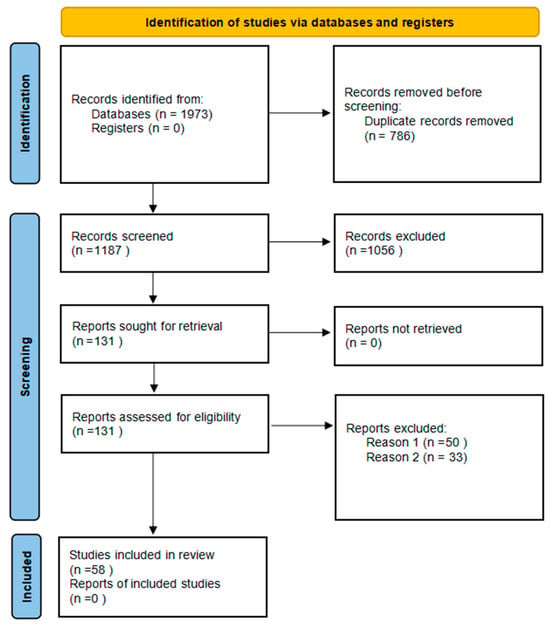
Figure 1
Open AccessArticle
Biomimetic Ultrasonic Vibrator with Broadband Characteristics Inspired by Leaf-Cutting Ants
by
Wenshuai Wu, Guang Yao, Mingshuo Zhang, Xinggang Jiang and Deyuan Zhang
Biomimetics 2024, 9(4), 247; https://doi.org/10.3390/biomimetics9040247 - 19 Apr 2024
Abstract
►▼
Show Figures
Power ultrasound is widely used in industrial production, medical equipment, aerospace, and other fields. Currently, there are two main types of commonly used power generation devices: piezoelectric ultrasonic transducers and magnetostrictive ultrasonic transducers. However, in certain situations with limited external dimensions, the applications
[...] Read more.
Power ultrasound is widely used in industrial production, medical equipment, aerospace, and other fields. Currently, there are two main types of commonly used power generation devices: piezoelectric ultrasonic transducers and magnetostrictive ultrasonic transducers. However, in certain situations with limited external dimensions, the applications of existing power ultrasound devices are limited. In nature, leaf-cutting ants excite vibrations through their tiny organs. Inspired by the vibratory organs of leaf-cutting ants, a new type of biomimetic ultrasonic vibrator (BUV) comprising a scraper, dentate disc, and fixture system was proposed, fabricated, and tested in this study. The experimental results showed that the BUV could operate in the frequency range of 16.8–19 kHz. Within the working frequency range, the vibration of the BUV was stable and the amplitude of the vibration displacement was greater than 22 µm. The operating frequency band of the BUV was broader than those of the piezoelectric and magnetostrictive ultrasonic transducers. In addition, the BUV can cut soft rubber and pig tissues with sufficient output power and load-carrying capacity. The BUV, as a new type of power ultrasonic excitation device, is expected to be applied in high-power micro operating scenarios, such as minimally invasive surgical instruments.
Full article
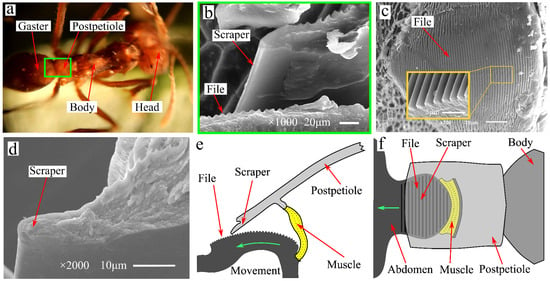
Figure 1
Open AccessArticle
Usefulness of Probing Sensor Device for Evaluating Meniscal Suture and Scaffold Implantation
by
Shunsuke Sezaki, Shuhei Otsuki, Takashi Ishitani, Takeru Iwata, Takehito Hananouchi, Yoshinori Okamoto, Hitoshi Wakama and Masashi Neo
Biomimetics 2024, 9(4), 246; https://doi.org/10.3390/biomimetics9040246 - 19 Apr 2024
Abstract
►▼
Show Figures
Appropriate suture tension is a key factor in successful meniscal repair. This study aimed to clarify the appropriate value of meniscal stabilization with suture repair based on a probing procedure for healthy porcine menisci and a novel meniscal scaffold. After evaluating the reliability
[...] Read more.
Appropriate suture tension is a key factor in successful meniscal repair. This study aimed to clarify the appropriate value of meniscal stabilization with suture repair based on a probing procedure for healthy porcine menisci and a novel meniscal scaffold. After evaluating the reliability of the probing sensor, meniscal vertical tear and partial meniscectomy models were developed, in which suture repair and meniscal scaffold implantation were performed at suture intervals ranging between 20 and 2.5 mm. The residence forces at each interval were evaluated using a probing sensor. Moreover, a tensile test was conducted to evaluate the displacement and presence or absence of gaps. We found that normal and meniscal scaffolds should be fixed within 5 mm of suture interval. The probing residence forces required were at least 1.0 N for vertical tears and 3.0 N for meniscal scaffolds. These findings may be taken into consideration to reduce suture failure following meniscal tear repair and stabilizing meniscal scaffold fixation.
Full article
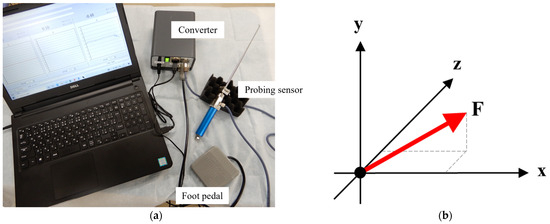
Figure 1
Open AccessArticle
Whole-Body Dynamics for Humanoid Robot Fall Protection Trajectory Generation with Wall Support
by
Weilong Zuo, Junyao Gao, Jiongnan Liu, Taiping Wu and Xilong Xin
Biomimetics 2024, 9(4), 245; https://doi.org/10.3390/biomimetics9040245 - 19 Apr 2024
Abstract
When humanoid robots work in human environments, they are prone to falling. However, when there are objects around that can be utilized, humanoid robots can leverage them to achieve balance. To address this issue, this paper established the state equation of a robot
[...] Read more.
When humanoid robots work in human environments, they are prone to falling. However, when there are objects around that can be utilized, humanoid robots can leverage them to achieve balance. To address this issue, this paper established the state equation of a robot using a variable height-inverted pendulum model and implemented online trajectory optimization using model predictive control. For the arms’ optimal joint angles during movement, this paper took the distributed polygon method to calculate the arm postures. To ensure that the robot reached the target position smoothly and rapidly during its motion, this paper adopts a whole-body motion control approach, establishing a cost function for multi-objective constraints on the robot’s movement. These constraints include whole-body dynamics, center of mass constraints, arm’s end effector constraints, friction constraints, and center of pressure constraints. In the simulation, four sets of methods were compared, and the experimental results indicate that compared to free fall motion, adopting the method proposed in this paper reduces the maximum acceleration of the robot when it touches the wall to 69.1 m/s2, effectively reducing the impact force upon landing. Finally, in the actual experiment, we positioned the robot 0.85 m away from the wall and applied a forward pushing force. We observed that the robot could stably land on the wall, and the impact force was within the range acceptable to the robot, confirming the practical effectiveness of the proposed method.
Full article
(This article belongs to the Special Issue Intelligent Human-Robot Interaction: 2nd Edition)
►▼
Show Figures
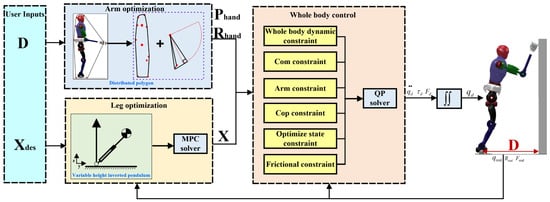
Figure 1
Open AccessArticle
In Vitro Characterization of Hydroxyapatite-Based Coatings Doped with Mg or Zn Electrochemically Deposited on Nanostructured Titanium
by
Diana M. Vranceanu, Elena Ungureanu, Ionut C. Ionescu, Anca C. Parau, Vasile Pruna, Irina Titorencu, Mihaela Badea, Cristina-Ștefania Gălbău, Mihaela Idomir, Mihaela Dinu, Alina Vladescu (Dragomir) and Cosmin M. Cotrut
Biomimetics 2024, 9(4), 244; https://doi.org/10.3390/biomimetics9040244 - 18 Apr 2024
Abstract
Biomaterials are an important and integrated part of modern medicine, and their development and improvement are essential. The fundamental requirement of a biomaterial is found to be in its interaction with the surrounding environment, with which it must coexist. The aim of this
[...] Read more.
Biomaterials are an important and integrated part of modern medicine, and their development and improvement are essential. The fundamental requirement of a biomaterial is found to be in its interaction with the surrounding environment, with which it must coexist. The aim of this study was to assess the biological characteristics of hydroxyapatite (HAp)-based coatings doped with Mg and Zn ions obtained by the pulsed galvanostatic electrochemical method on the surface of pure titanium (cp-Ti) functionalized with titanium dioxide nanotubes (NTs TiO2) obtained by anodic oxidation. The obtained results highlighted that the addition of Zn or Mg into the HAp structure enhances the in vitro response of the cp-Ti surface functionalized with NT TiO2. The contact angle and surface free energy showed that all the developed surfaces have a hydrophilic character in comparison with the cp-Ti surface. The HAp-based coatings doped with Zn registered superior values than the ones with Mg, in terms of biomineralization, electrochemical behavior, and cell interaction. Overall, it can be said that the addition of Mg or Zn can enhance the in vitro behavior of the HAp-based coatings in accordance with clinical requirements. Antibacterial tests showed that the proposed HAp-Mg coatings had no efficiency against Escherichia coli, while the HAp-Zn coatings registered the highest antibacterial efficiency.
Full article
(This article belongs to the Special Issue Bioinspired Surfaces and Functions: 2nd Edition)
►▼
Show Figures
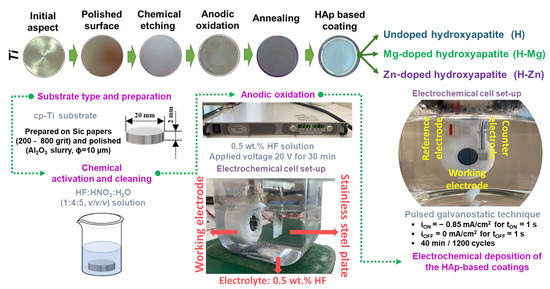
Figure 1
Open AccessSystematic Review
Use of Nanoparticles in Regenerative Dentistry: A Systematic Review
by
María Pilar Pecci-Lloret, Silvia Gea-Alcocer, Laura Murcia-Flores, Francisco Javier Rodríguez-Lozano and Ricardo Elías Oñate-Sánchez
Biomimetics 2024, 9(4), 243; https://doi.org/10.3390/biomimetics9040243 - 18 Apr 2024
Abstract
Introduction: nanoparticles are tiny-sized materials whose characteristics and properties mean that their association with dental materials is being investigated to ascertain their effects and possible benefits on tooth structures. This systematic review aimed to qualitatively collect in vitro studies that address the potential
[...] Read more.
Introduction: nanoparticles are tiny-sized materials whose characteristics and properties mean that their association with dental materials is being investigated to ascertain their effects and possible benefits on tooth structures. This systematic review aimed to qualitatively collect in vitro studies that address the potential application of different nanoparticles in dental regeneration. Following an exhaustive search and article selection process, 16 in vitro studies that met our eligibility criteria were included. BG-NPs were analyzed across five studies, with three demonstrating their impact on the growth and differentiation of human hDPSCs. CS-NPs were examined in three studies, with findings from two indicating a significant effect on the differentiation of SCAPs. Nanoparticles’ therapeutic potential and their stimulatory effect on promoting the regeneration of cells of the dentin-pulp complex have been proven. Their effect is altered according to the type of nanoparticle, concentration, and substances associated with them and, depending on these variables, they will affect the pulp, dentine, and dental cementum differently.
Full article
(This article belongs to the Special Issue Biomimetic Remineralization on Enamel and Dentin: 2nd Edition)
►▼
Show Figures
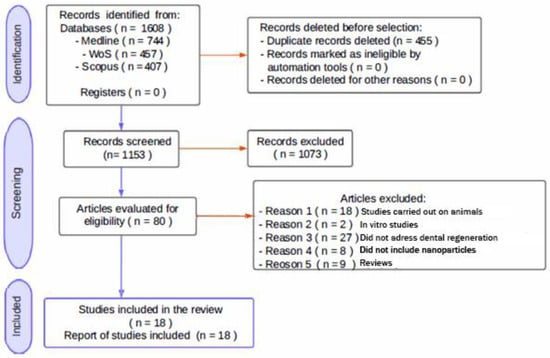
Figure 1
Open AccessArticle
A Sustainable Multi-Objective Model for Capacitated-Electric-Vehicle-Routing-Problem Considering Hard and Soft Time Windows as Well as Partial Recharging
by
Amir Hossein Sheikh Azadi, Mohammad Khalilzadeh, Jurgita Antucheviciene, Ali Heidari and Amirhossein Soon
Biomimetics 2024, 9(4), 242; https://doi.org/10.3390/biomimetics9040242 - 18 Apr 2024
Abstract
Due to the high pollution of the transportation sector, nowadays the role of electric vehicles has been noticed more and more by governments, organizations, and environmentally friendly people. On the other hand, the problem of electric vehicle routing (EVRP) has been widely studied
[...] Read more.
Due to the high pollution of the transportation sector, nowadays the role of electric vehicles has been noticed more and more by governments, organizations, and environmentally friendly people. On the other hand, the problem of electric vehicle routing (EVRP) has been widely studied in recent years. This paper deals with an extended version of EVRP, in which electric vehicles (EVs) deliver goods to customers. The limited battery capacity of EVs causes their operational domains to be less than those of gasoline vehicles. For this purpose, several charging stations are considered in this study for EVs. In addition, depending on the operational domain, a full charge may not be needed, which reduces the operation time. Therefore, partial recharging is also taken into account in the present research. This problem is formulated as a multi-objective integer linear programming model, whose objective functions include economic, environmental, and social aspects. Then, the preemptive fuzzy goal programming method (PFGP) is exploited as an exact method to solve small-sized problems. Also, two hybrid meta-heuristic algorithms inspired by nature, including MOSA, MOGWO, MOPSO, and NSGAII_TLBO, are utilized to solve large-sized problems. The results obtained from solving the numerous test problems demonstrate that the hybrid meta-heuristic algorithm can provide efficient solutions in terms of quality and non-dominated solutions in all test problems. In addition, the performance of the algorithms was compared in terms of four indexes: time, MID, MOCV, and HV. Moreover, statistical analysis is performed to investigate whether there is a significant difference between the performance of the algorithms. The results indicate that the MOSA algorithm performs better in terms of the time index. On the other hand, the NSGA-II-TLBO algorithm outperforms in terms of the MID, MOCV, and HV indexes.
Full article
(This article belongs to the Special Issue Nature-Inspired Metaheuristic Optimization Algorithms 2024)
►▼
Show Figures
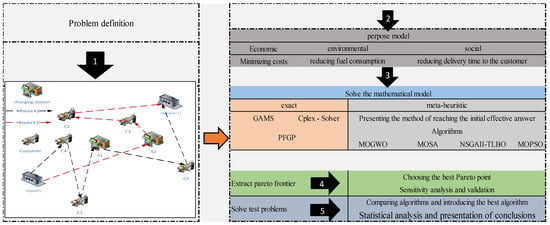
Figure 1
Open AccessArticle
Diatom-Inspired Structural Adaptation According to Mode Shapes: A Study on 3D Structures and Software Tools
by
Simone Andresen and Ahmad Burhani Ahmad Basri
Biomimetics 2024, 9(4), 241; https://doi.org/10.3390/biomimetics9040241 - 18 Apr 2024
Abstract
Diatoms captivate both biologists and engineers with their remarkable mechanical properties and lightweight design principles inherent in their shells. Recent studies have indicated that diatom frustules possess optimized shapes that align with vibrational modes, suggesting an inherent adaptation to vibratory loads. The mode
[...] Read more.
Diatoms captivate both biologists and engineers with their remarkable mechanical properties and lightweight design principles inherent in their shells. Recent studies have indicated that diatom frustules possess optimized shapes that align with vibrational modes, suggesting an inherent adaptation to vibratory loads. The mode shape adaptation method is known to significantly alter eigenfrequencies of 1D and 2D structures to prevent undesired vibration amplitudes. Leveraging this insight, the diatom-inspired approach to deform structures according to mode shapes was extended to different complex 3D structures, demonstrating a significant enhancement in eigenfrequencies with distinct mode shapes. Through extensive parameter studies, frequency increases exceeding 200% were obtained, showcasing the method’s effectiveness. In the second study part, the studied method was integrated into a user-friendly, low-code software facilitating swift and automated structural adjustments for eigenfrequency optimization. The created software tools, encompassing various components, were successfully tested on the example structures demonstrating the versatility and practicality of implementing biomimetic strategies in engineering designs. Thus, the present investigation does not only highlight the noteworthiness of the structural adaptation method inspired by diatoms in maximizing eigenfrequencies, but also originate software tools permitting different users to easily apply the method to distinct structures that have to be optimized, e.g., lightweight structures in the mobility or aerospace industry that are susceptible toward vibrations.
Full article
(This article belongs to the Special Issue Biological and Bioinspired Smart Adaptive Structures)
►▼
Show Figures

Figure 1
Open AccessArticle
Analysis and Simulation of the Compressive Strength of Bioinspired Lightweight Structures Manufactured by a Stereolithography 3D Printer
by
Cristina Alía García, Álvaro Rodríguez Ortiz, José Manuel Arenas Reina, Juan David Cano-Moreno and Manuel Gómez Gómez
Biomimetics 2024, 9(4), 240; https://doi.org/10.3390/biomimetics9040240 - 17 Apr 2024
Abstract
The use of metamaterials is a good alternative when looking for structures that can withstand compression forces without increasing their weight. In this sense, using nature as a reference can be an appropriate option to design this type of material. Therefore, in this
[...] Read more.
The use of metamaterials is a good alternative when looking for structures that can withstand compression forces without increasing their weight. In this sense, using nature as a reference can be an appropriate option to design this type of material. Therefore, in this work, a comparative study of a selection of eight representative models of a wide variety of existing solutions, both bioinspired and proposed by various researchers, is presented. These models have been manufactured using stereolithography (SLA) printing, which allows complex geometries to be obtained in a simple way that would be more complicated to achieve by other procedures. Additionally, the manufacturing cost of each model has been determined. The compression tests of the different models have made it possible to evaluate the breaking force and its corresponding deformation. Likewise, a finite element analysis of the manufactured models has been carried out to simulate their behavior under compression, achieving results very similar to those obtained in the experimental tests. In this way, it has been concluded that, among the three-dimensional patterns, the structure called “3D auxetic” is the one that supports the greatest breaking force due to the topographic characteristics of its bar structure. Similarly, among the two-dimensional patterns, the structure called “Auxetic 1”, with a topography based on curves, is capable of supporting the greatest deformation in the compression direction before breaking. Moreover, the highest resistance-force-to-cost ratio has been obtained with a “3D auxetic” structure.
Full article
(This article belongs to the Section Biomimetics of Materials and Structures)
►▼
Show Figures
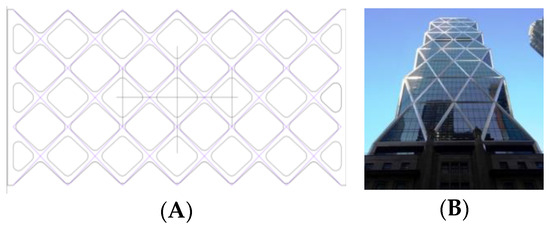
Figure 1
Open AccessArticle
A Mechanical Approach for Comparing Jaws in Fishes
by
Federica Trotta, Roberto Sandulli and Simone Cinquemani
Biomimetics 2024, 9(4), 239; https://doi.org/10.3390/biomimetics9040239 - 16 Apr 2024
Abstract
This paper aims to propose an quantitative engineering approach to study and compare the jaw mechanisms of different marine species, considering essential mechanical parameters generally used to evaluate the performance of industrial linkage mechanisms. By leveraging these parameters, the paper demonstrates how the
[...] Read more.
This paper aims to propose an quantitative engineering approach to study and compare the jaw mechanisms of different marine species, considering essential mechanical parameters generally used to evaluate the performance of industrial linkage mechanisms. By leveraging these parameters, the paper demonstrates how the species’ characteristics and behaviors align with the findings of biologists, enabling a meaningful comparison that was not previously possible. Seven fish species from various families are chosen to maintain a generic approach.
Full article
(This article belongs to the Special Issue Bionic Robotic Fish)
►▼
Show Figures

Figure 1
Open AccessArticle
E-DQN-Based Path Planning Method for Drones in Airsim Simulator under Unknown Environment
by
Yixun Chao, Rüdiger Dillmann, Arne Roennau and Zhi Xiong
Biomimetics 2024, 9(4), 238; https://doi.org/10.3390/biomimetics9040238 - 16 Apr 2024
Abstract
To improve the rapidity of path planning for drones in unknown environments, a new bio-inspired path planning method using E-DQN (event-based deep Q-network), referring to introducing event stream to reinforcement learning network, is proposed. Firstly, event data are collected through an airsim
[...] Read more.
To improve the rapidity of path planning for drones in unknown environments, a new bio-inspired path planning method using E-DQN (event-based deep Q-network), referring to introducing event stream to reinforcement learning network, is proposed. Firstly, event data are collected through an airsim simulator for environmental perception, and an auto-encoder is presented to extract data features and generate event weights. Then, event weights are input into DQN (deep Q-network) to choose the action of the next step. Finally, simulation and verification experiments are conducted in a virtual obstacle environment built with an unreal engine and airsim. The experiment results show that the proposed algorithm is adaptable for drones to find the goal in unknown environments and can improve the rapidity of path planning compared with that of commonly used methods.
Full article
(This article belongs to the Section Locomotion and Bioinspired Robotics)
►▼
Show Figures
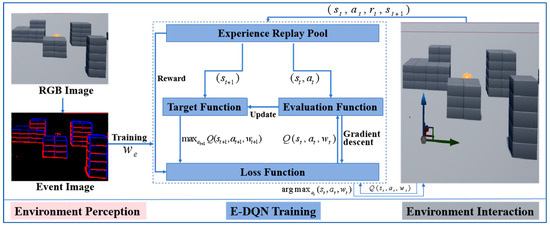
Figure 1
Highly Accessed Articles
Latest Books
E-Mail Alert
News
Topics
Topic in
Bioengineering, Biology, Biomimetics, Life, Molecules
Biomarkers and Therapeutic Targets Based on Bioinformatical Studies
Topic Editors: Qingjia Chi, Xiangcheng ChenDeadline: 31 December 2024
Topic in
Applied Sciences, Electronics, Future Internet, Machines, Systems, Technologies, Biomimetics
Theoretical and Applied Problems in Human-Computer Intelligent Systems
Topic Editors: Jiahui Yu, Charlie Yang, Zhenyu Wen, Dalin Zhou, Dongxu Gao, Changting LinDeadline: 30 June 2025

Conferences
Special Issues
Special Issue in
Biomimetics
Editorial Board Members’ Reviews Collection Series: Biomimetic Surfaces and Interfaces
Guest Editor: Yongmei ZhengDeadline: 25 April 2024
Special Issue in
Biomimetics
Taking Inspiration from Nature: Construction Materials
Guest Editors: Negin Imani, Brenda ValeDeadline: 30 April 2024
Special Issue in
Biomimetics
Biological Attachment Systems and Biomimetics
Guest Editors: Stanislav N. Gorb, Thies BüscherDeadline: 20 May 2024
Special Issue in
Biomimetics
Bio-Inspired Optimization Algorithms and Designs for Engineering Applications: 2nd Edition
Guest Editors: Heming Jia, Laith Abualigah, Xuewen XiaDeadline: 31 May 2024




